Local Community Perceptions on Landscape Change, Ecosystem Services, Climate Change, and Livelihoods in Gonarezhou National Park, Zimbabwe
Abstract
1. Introduction
The Knowledge Gap in Gonarezhou, Zimbabwe
2. Study Area
3. Methods and Procedures
3.1. Survey Data and Secondary Data
3.2. Data Analysis
3.3. Landscape Change Mapping and Analysis
4. Results and Discussion
4.1. Livelihoods
4.2. Landscape Change
5. Perception of Ecosystem Services
5.1. Provisioning Services
5.2. Cultural Services
6. Climate Change and Variability
7. Summary and Conclusions
Supplementary Materials
Author Contributions
Funding
Acknowledgments
Conflicts of Interest
References
- Jewitt, D.; Goodman, P.S.; O’Connor, T.G.; Erasmus, B.F.N.; Witkowski, E.T.F. Mapping landscape beta diversity of plants across KwaZulu-Natal, South Africa, for aiding conservation planning. Biodivers. Conserv. 2016, 25, 2641–2654. [Google Scholar] [CrossRef]
- Jewitt, G.; Garratt, J.; Calder, I.; Fuller, L. Water resources planning and modelling tools for the assessment of land use change in the Luvuvhu Catchment, South Africa. Phys. Chem. Earth 2004, 29, 1233–1241. [Google Scholar] [CrossRef]
- Kamwi, J.M.; Chirwa, P.W.; Manda, S.O.; Graz, P.F.; Kätsch, C. Livelihoods, land use and land cover change in the Zambezi Region, Namibia. Popul. Environ. 2015, 37, 207–230. [Google Scholar] [CrossRef]
- Kori, E.; Gondo, T.; Madilonga, R. The Influence of Rainfall Variability on Arable Land Use at Local Level: Realities from Nzhelele Valley, South Africa. In Proceedings of the International Conference on Future Environment and Energy IPCBEE, Singapore, 26–28 Februaray 2012. [Google Scholar]
- Grass, I.; Kubitza, C.; Krishna, V.V.; Corre, M.D.; Mußhoff, O.; Pütz, P.; Drescher, J.; Rembold, K.; Ariyanti, E.S.; Barnes, A.D. Trade-offs between multifunctionality and profit in tropical smallholder landscapes. Nat. Commun. 2020, 11, 1–13. [Google Scholar] [CrossRef] [PubMed]
- Steffen, W.; Persson, Å.; Deutsch, L.; Zalasiewicz, J.; Williams, M.; Richardson, K.; Crumley, C.; Crutzen, P.; Folke, C.; Gordon, L.; et al. The anthropocene: From global change to planetary stewardship. Ambio 2011, 40, 739–761. [Google Scholar] [CrossRef] [PubMed]
- Steffen, W.; Broadgate, W.; Deutsch, L.; Gaffney, O.; Ludwig, C. The trajectory of the anthropocene: The great acceleration. Anthr. Rev. 2015, 2, 81–98. [Google Scholar] [CrossRef]
- Steffen, W.; Crutzen, P.J.; McNeill, J.R. The anthropocene: Are humans now overwhelming the great forces of nature? Ambio 2007, 36, 614–621. [Google Scholar] [CrossRef]
- Lewis, S.L.; Maslin, M.A. Defining the Anthropocene. Nature 2015, 519, 171–180. [Google Scholar] [CrossRef]
- Lin, B.B.; Egerer, M.H. Global social and environmental change drives the management and delivery of ecosystem services from urban gardens: A case study from Central Coast, California. Glob. Environ. Chang. 2020, 60, 102006. [Google Scholar] [CrossRef]
- United Nations. Transforming our World: The 2030 Agenda for Sustainable Development; United Nations: New York, NY, USA, 2015. [Google Scholar]
- Millennium Ecosystem Assesment (MEA). Ecosystems and Human Well-Being; Island Press: Washington, DC, USA, 2005; Volume 5. [Google Scholar]
- Costanza, R.; de Groot, R.; Sutton, P.; van der Ploeg, S.; Anderson, S.J.; Kubiszewski, I.; Farber, S.; Turner, R.K. Changes in the global value of ecosystem services. Glob. Environ. Chang. 2014, 26, 152–158. [Google Scholar] [CrossRef]
- Burkhard, B.; Petrosillo, I.; Costanza, R. Ecosystem services—Bridging ecology, economy and social sciences. Ecol. Complex. 2010, 7, 257–259. [Google Scholar] [CrossRef]
- Feng, Q.; Zhao, W.; Fu, B.; Ding, J.; Wang, S. Ecosystem service trade-offs and their influencing factors: A case study in the Loess Plateau of China. Sci. Total Environ. 2017, 607–608, 1250–1263. [Google Scholar] [CrossRef] [PubMed]
- Li, T.; Wang, S.; Liu, Y.; Fu, B.; Zhao, W. Driving forces and their contribution to the recent decrease in sediment flux to ocean of major rivers in China. Sci. Total Environ. 2018, 634, 534–541. [Google Scholar] [CrossRef] [PubMed]
- Wisely, S.M.; Alexander, K.; Mahlaba, T.A.; Cassidy, L. Linking ecosystem services to livelihoods in southern Africa. Ecosyst. Serv. 2018, 30, 339–341. [Google Scholar] [CrossRef]
- Marongwe, L.S.; Kwazira, K.; Jenrich, M.; Thierfelder, C.; Kassam, A.; Friedrich, T. An African success: The case of conservation agriculture in Zimbabwe. Int. J. Agric. Sustain. 2011, 9, 153–161. [Google Scholar] [CrossRef]
- Musakwa, W.; Wang, S. Landscape change and its drivers: A Southern African perspective. Curr. Opin. Environ. Sustain. 2018, 33, 80–86. [Google Scholar] [CrossRef]
- Griscom, H.R.; Miller, S.N.; Gyedu-Ababio, T.; Sivanpillai, R. Mapping land cover change of the Luvuvhu catchment, South Africa for environmental modelling. GeoJournal 2010, 75, 163–173. [Google Scholar] [CrossRef]
- Shackleton, S.E. Exploring Long-Term Livelihood and Landscape Change in Two Semi-Arid Sites in Southern Africa: Drivers and Consequences for Social–Ecological Vulnerability. Land 2018, 7, 1–23. [Google Scholar]
- Clark, V.R.; Vidal, J.d.D.; Grundy, I.M.; Fakarayi, T.; Childes, S.L.; Barker, N.P.; Linder, H.P. Bridging the divide between intuitive social-ecological value and sustainability in the Manica Highlands of southern Africa (Zimbabwe-Mozambique). Ecosyst. Serv. 2019, 39, 100999. [Google Scholar] [CrossRef]
- Cruz-Garcia, G.S.; Sachet, E.; Blundo-Canto, G.; Vanegas, M.; Quintero, M. To what extent have the links between ecosystem services and human well-being been researched in Africa, Asia, and Latin America? Ecosyst. Serv. 2017, 25, 201–212. [Google Scholar] [CrossRef]
- Kihara, J.; Bolo, P.; Kinyua, M.; Nyawira, S.S.; Sommer, R. Soil health and ecosystem services: Lessons from sub-Sahara Africa (SSA). Geoderma 2020, 370, 114342. [Google Scholar] [CrossRef]
- UNEP-WCMC. Protected Area Profile for Africa from the World Database of Protected Areas. April 2020. Available online: https://www.protectedplanet.net/region/AF (accessed on 21 April 2020).
- Wu, J. Landscape sustainability science: Ecosystem services and human well-being in changing landscapes. Landsc. Ecol. 2013, 28, 999–1023. [Google Scholar] [CrossRef]
- Wang, S.; Fu, B.; Zhao, W.; Liu, Y.; Wei, F. Structure, function, and dynamic mechanisms of coupled human–natural systems. Curr. Opin. Environ. Sustain. 2018, 33, 87–91. [Google Scholar] [CrossRef]
- West, P.; Igoe, J.; Brockington, D. Parks and peoples: The social impact of protected areas. Annu. Rev. Anthr. 2006, 35, 251–277. [Google Scholar] [CrossRef]
- Brooks, T.M.; Akçakaya, H.R.; Burgess, N.D.; Butchart, S.H.M.; Hilton-Taylor, C.; Hoffmann, M.; Juffe-Bignoli, D.; Kingston, N.; MacSharry, B.; Parr, M.; et al. Analysing biodiversity and conservation knowledge products to support regional environmental assessments. Sci. Data 2016, 3, 160007. [Google Scholar] [CrossRef]
- McCabe, T.J.; Perkin, S.; Schofield, C. Can Conservation and Development be Coupled among Pastoral People? An Examination of the Maasai of the Ngorongoro Conservation Area, Tanzania. Hum. Organ. 1992, 51, 353–366. [Google Scholar] [CrossRef]
- Green, D.S.; Zipkin, E.F.; Incorvaia, D.C.; Holekamp, K.E. Long-term ecological changes influence herbivore diversity and abundance inside a protected area in the Mara-Serengeti ecosystem. Global Ecol. Conserv. 2019, 20, e00697. [Google Scholar] [CrossRef]
- White, P.C.L.; Ward, A.I. Interdisciplinary approaches for the management of existing and emerging human–wildlife conflicts. Wildl. Res. 2010, 37, 623–629. [Google Scholar] [CrossRef]
- Rosenzweig, C.; Solecki, W. Action pathways for transforming cities. Nat. Clim. Chang. 2018, 8, 756–759. [Google Scholar] [CrossRef]
- Steg, L. Limiting climate change requires research on climate action. Nat. Clim. Chang. 2018, 8, 759–761. [Google Scholar] [CrossRef]
- Pettorelli, N.; Chauvenet, A.L.M.; Duffy, J.P.; Cornforth, W.A.; Meillere, A.; Baillie, J.E.M. Tracking the effect of climate change on ecosystem functioning using protected areas: Africa as a case study. Ecol. Indic. 2012, 20, 269–276. [Google Scholar] [CrossRef]
- Otto-Mentz, V. Cyclone Idai and the importance of resilience. MoneyMarketing 2019, 2019, 16. [Google Scholar]
- Chamaillé-Jammes, S.; Fritz, H.; Murindagomo, F. Detecting climate changes of concern in highly variable environments: Quantile regressions reveal that droughts worsen in Hwange National Park, Zimbabwe. J. Arid Environ. 2007, 71, 321–326. [Google Scholar] [CrossRef]
- Gandiwa, E.; Zisadza, P. Wildlife management in Gonarezhou National Park, Southeast Zimbabwe: Climate change and implications for management. Nat. Faune 2011, 25, 101–110. [Google Scholar]
- Wangui, E.E. Gender, livelihoods and the construction of climate change among Maasai pastoralists. In Global Perspectives on Gender and Space: Engaging Feminism and Development; Routledge: New York, NY, USA, 2014; pp. 163–180. [Google Scholar]
- Mero Dowo, G.; Kativu, S.; de Garine-Wichatitsky, M. Local perceptions of tree diversity, resource utilisation and ecosystem services provision at the periphery of Gonarezhou National Park, Zimbabwe. For. Trees Livelihoods 2018, 27, 1–21. [Google Scholar] [CrossRef]
- Mombeshora, S.; Le Bel, S. Parks-people conflicts: The case of Gonarezhou National Park and the Chitsa community in south-east Zimbabwe. Biodivers. Conserv. 2009, 18, 2601–2623. [Google Scholar] [CrossRef]
- Mandudzo, W.C. People and Parks: On the Relationship Between Community Development and Nature Conservation Amid Climate Change in South-Eastern Zimbabwe. In Climate Change-Resilient Agriculture and Agroforestry; Springer: Cham, Switzerland, 2019; pp. 471–491. [Google Scholar]
- Gandiwa, E.; Heitkönig, I.M.; Lokhorst, A.M.; Prins, H.H.; Leeuwis, C. Illegal hunting and law enforcement during a period of economic decline in Zimbabwe: A case study of northern Gonarezhou National Park and adjacent areas. J. Nat. Conserv. 2013, 21, 133–142. [Google Scholar] [CrossRef]
- Gandiwa, E.; Heitkönig, I.M.; Lokhorst, A.M.; Prins, H.H.; Leeuwis, C. CAMPFIRE and human-wildlife conflicts in local communities bordering northern Gonarezhou National Park, Zimbabwe. Ecol. Soc. 2013, 18, 7. [Google Scholar] [CrossRef]
- Muboko, N.; Bradshaw, G.J. Towards resolving local community and protected area management conflicts: Lessons from the Chitsa community and Gonarezhou National Park, Zimbabwe. Int. J. Dev. Confl. 2018, 8, 62–79. [Google Scholar]
- Mutanga, C.N.; Gandiwa, E.; Muboko, N. An analysis of tourist trends in northern Gonarezhou National Park, Zimbabwe, 1991–2014. Cogent Soc. Sci. 2017, 3, 1392921. [Google Scholar] [CrossRef]
- Tafangenyasha, C. Tree loss in the Gonarezhou National Park (Zimbabwe) between 1970 and 1983. J. Environ. Manag. 1997, 49, 355–366. [Google Scholar] [CrossRef]
- Gandiwa, E.; Heitkönig, I.M.; Eilers, P.H.; Prins, H.H. Rainfall variability and its impact on large mammal populations in a complex of semi-arid African savanna protected areas. Trop. Ecol. 2016, 57, 163–180. [Google Scholar]
- Frischen, J.; Meza, I.; Rupp, D.; Wietler, K.; Hagenlocher, M. Drought Risk to Agricultural Systems in Zimbabwe: A Spatial Analysis of Hazard, Exposure, and Vulnerability. Sustainability 2020, 12, 752. [Google Scholar] [CrossRef]
- Tress, B.; Tress, G. Environmental and landscape change: Addressing an interdisciplinary agenda. J. Environ. Manag. 2009, 90, 2849–2850. [Google Scholar] [CrossRef] [PubMed]
- Tress, B.; Tress, G.; Fry, G. Integrative research on environmental and landscape change: PhD students’ motivations and challenges. J. Environ. Manag. 2009, 90, 2921–2929. [Google Scholar] [CrossRef]
- Cockburn, J.; Rouget, M.; Slotow, R.; Roberts, D.; Boon, R.; Douwes, E.; O’Donoghue, S.; Downs, C.; Mukherjee, S.; Musakwa, W.; et al. How to build science-action partnerships for local land-use planning and management: Lessons from Durban, South Africa. Ecol. Soc. 2016, 21, 28. [Google Scholar] [CrossRef]
- Gonarezhou Conservation Trust (GCT). The Park. 2020. Available online: http://gonarezhou.org/the-park/ (accessed on 28 March 2020).
- ZimStat, Z.N.S.A. Census 2012 Provincial Report Masvingo. 2012. Available online: https://www.zimstat.co.zw/sites/default/files/img/publications/Census/CensusResults2012/Masvingo.pdf (accessed on 30 March 2020).
- Vasileiou, K.; Barnett, J.; Thorpe, S.; Young, T. Characterising and justifying sample size sufficiency in interview-based studies: Systematic analysis of qualitative health research over a 15-year period. Bmc Med Res. Methodol. 2018, 18, 148. [Google Scholar] [CrossRef]
- Lincoln, Y.S. Naturalistic inquiry. In The Blackwell Encyclopedia of Sociology; Ritzer, G., Ed.; John Wiley and Sons: Hoboken, NJ, USA, 2007. [Google Scholar]
- Hersperger, A.M.; Bürgi, M. Going beyond landscape change description: Quantifying the importance of driving forces of landscape change in a Central Europe case study. Land Use Policy 2009, 26, 640–648. [Google Scholar] [CrossRef]
- Lambin, F.E.; Geist, H.J.; Lepers, E. Dynamics of land-use and land-cover change in tropical regions. Annu. Rev. Environ. Resour. 2003, 28, 205–241. [Google Scholar] [CrossRef]
- Lambin, E.F.; Turner, B.L.; Geist, H.J.; Agbola, S.B.; Angelsen, A.; Bruce, J.W.; Coomes, O.T.; Dirzo, R.; Fischer, G.; Folke, C.; et al. The causes of land-use and land-cover change: Moving beyond the myths. Glob. Environ. Chang. 2001, 11, 261–269. [Google Scholar] [CrossRef]
- Schneeberger, N.; Bürgi, M.; Hersperger, A.M.; Ewald, K.C. Driving forces and rates of landscape change as a promising combination for landscape change research—An application on the northern fringe of the Swiss Alps. Land Use Policy 2007, 24, 349–361. [Google Scholar] [CrossRef]
- Altea, L. Perceptions of climate change and its impacts: A comparison between farmers and institutions in the Amazonas Region of Peru. Clim. Dev. 2020, 12, 134–146. [Google Scholar] [CrossRef]
- Grimberg, B.I.; Ahmed, S.; Ellis, C.; Miller, Z.; Menalled, F. Climate change perceptions and observations of agricultural stakeholders in the Northern Great Plains. Sustainability 2018, 10, 1687. [Google Scholar] [CrossRef]
- Shackley, S.; Deanwood, R. Stakeholder perceptions of climate change impacts at the regional scale: Implications for the effectiveness of regional and local responses. J. Environ. Plan. Manag. 2002, 45, 381–402. [Google Scholar] [CrossRef]
- Spence, A.; Poortinga, W.; Butler, C.; Pidgeon, N.F. Perceptions of climate change and willingness to save energy related to flood experience. Nat. Clim. Chang. 2011, 1, 46–49. [Google Scholar] [CrossRef]
- Pollnac, R.B.; Crawford, B.R. Assessing Behavioral Aspects of Coastal Resource Use. 2000. Available online: https://www.crc.uri.edu/download/Assessing_Behavioral_Aspects.pdf (accessed on 21 April 2020).
- McNally, C.G.; Gold, A.J.; Pollnac, R.B.; Kiwango, H.R. Stakeholder perceptions of ecosystem services of the Wami River and Estuary. Ecol. Soc. 2016, 21, 34. [Google Scholar] [CrossRef]
- Yan, J.; Wang, L.; Song, W.; Chen, Y.; Chen, X.; Deng, Z. A time-series classification approach based on change detection for rapid land cover mapping. ISPRS J. Photogramm. Remote Sens. 2019, 158, 249–262. [Google Scholar] [CrossRef]
- Deng, Z.; Zhu, X.; He, Q.; Tang, L. Land use/land cover classification using time series Landsat 8 images in a heavily urbanized area. Adv. Space Res. 2019, 63, 2144–2154. [Google Scholar] [CrossRef]
- Wang, C.; Middel, A.; Myint, S.W.; Kaplan, S.; Brazel, A.J.; Lukasczyk, J. Assessing local climate zones in arid cities: The case of Phoenix, Arizona and Las Vegas, Nevada. ISPRS J. Photogramm. Remote Sens. 2018, 141, 59–71. [Google Scholar] [CrossRef]
- Thompson, M. A standard land-cover classification scheme for remote-sensing applications in South Africa. S. Afr. J. Sci. 1996, 92, 34–42. [Google Scholar]
- Anderson, J.R. A Land Use and Land Cover Classification System for Use with Remote Sensor Data; US Government Printing Office: Washington, DC, USA, 1976; Volume 964. [Google Scholar]
- Musakwa, W.; Wang, S.; Wei, F.; Malapane, O.L.; Thomas, M.M.; Mavengahama, S.; Zeng, H.; Wu, B.; Zhao, W.; Nyathi, N.A.; et al. Survey of Community Livelihoods and Landscape Change along the Nzhelele and Levuvhu River Catchments in Limpopo Province, South Africa. Land 2020, 9, 91. [Google Scholar] [CrossRef]
- Matamanda, A.R.; Chirisa, I.; Dzvimbo, M.A.; Chinozvina, Q.L. The political economy of Zimbabwean Urban informality since 2000—A contemporary governance dilemma. Dev. South. Afr. 2019, 1–14. [Google Scholar] [CrossRef]
- Chisango, T. Challenges and prospects of Zimbabwe’s command farming in unlocking the country’s smallholder agricultural economy. Int. J. Agric. Econ. 2018, 3, 76–82. [Google Scholar]
- Medina, L.; Schneider, F. Shadow Economies around the World: What Did We Learn over the Last 20 Years? 2018. Available online: https://www.imf.org/en/Publications/WP/Issues/2018/01/25/Shadow-Economies-Around-the-World-What-Did-We-Learn-Over-the-Last-20-Years-45583 (accessed on 20 April 2020).
- Beegle, K.; Christiaensen, L.; Dabalen, A.; Gaddis, I. Poverty in a Rising Africa; The World Bank: Washington, DC, USA, 2016; Available online: http://documents.worldbank.org/curated/en/949241467996692059/pdf/103948-PUB-POVERTY-AFRICA-Box394870B-PUBLIC.pdf (accessed on 23 April 2020).
- Zhang, X.; Zhao, W.; Wang, L.; Liu, Y.; Feng, Q.; Fang, X.; Liu, Y. Distribution of shrubland and grassland soil erodibility on the Loess Plateau. Int. J. Environ. Res. Public Health 2018, 15, 1193. [Google Scholar] [CrossRef] [PubMed]
- Fan, H.; Zhao, W.; Daryanto, S.; Fu, B.; Wang, S.; Wang, Y. Vertical Distributions of Soil Organic Carbon and its Influencing Factors Under Different Land Use Types in the Desert Riparian Zone of Downstream Heihe River Basin, China. J. Geophys. Res. Atmos. 2018, 123, 7741–7753. [Google Scholar] [CrossRef]
- Dunham, K.M.; Van der Westhuizen, H.F. Aerial Survey of Elephants and other Large Herbivores in Gonarezhou National Park (Zimbabwe) and some Adjacent Areas: 2016; Gonarezhou Conservation Trust: Chiredzi, Zimbabwe, 2016. [Google Scholar]
- Gutierrez-Arellano, C.; Mulligan, M. A review of regulation ecosystem services and disservices from faunal populations and potential impacts of agriculturalisation on their provision, globally. Nat. Conserv. 2018, 30, 1–39. [Google Scholar] [CrossRef]
- Dung, P.T.; Sharma, S. Chapter 2—Responding to Climate Change in the Agriculture and Rural Development Sector in Vietnam. In Redefining Diversity & Dynamics of Natural Resources Management in Asia, Volume 2; Van Thanh, M., Duc Vien, T., Leisz, S.J., Shivakoti, G.P., Eds.; Elsevier: Amsterdam, The Netherlands, 2017; pp. 13–25. [Google Scholar]
- Fitchett, J.M.; Grab, S.W. A 66-year tropical cyclone record for south-east Africa: Temporal trends in a global context. Int. J. Climatol. 2014, 34, 3604–3615. [Google Scholar] [CrossRef]
- Mpofu, E.; Gandiwa, E.; Zisadza-Gandiwa, P.; Zinhiva, H. Abundance, distribution and status of African baobab(Adansonia digitata L.) in dry savanna woodlands in southern Gonarezhou National Park, southeast Zimbabwe. Trop. Ecol. 2012, 53, 119–124. [Google Scholar]
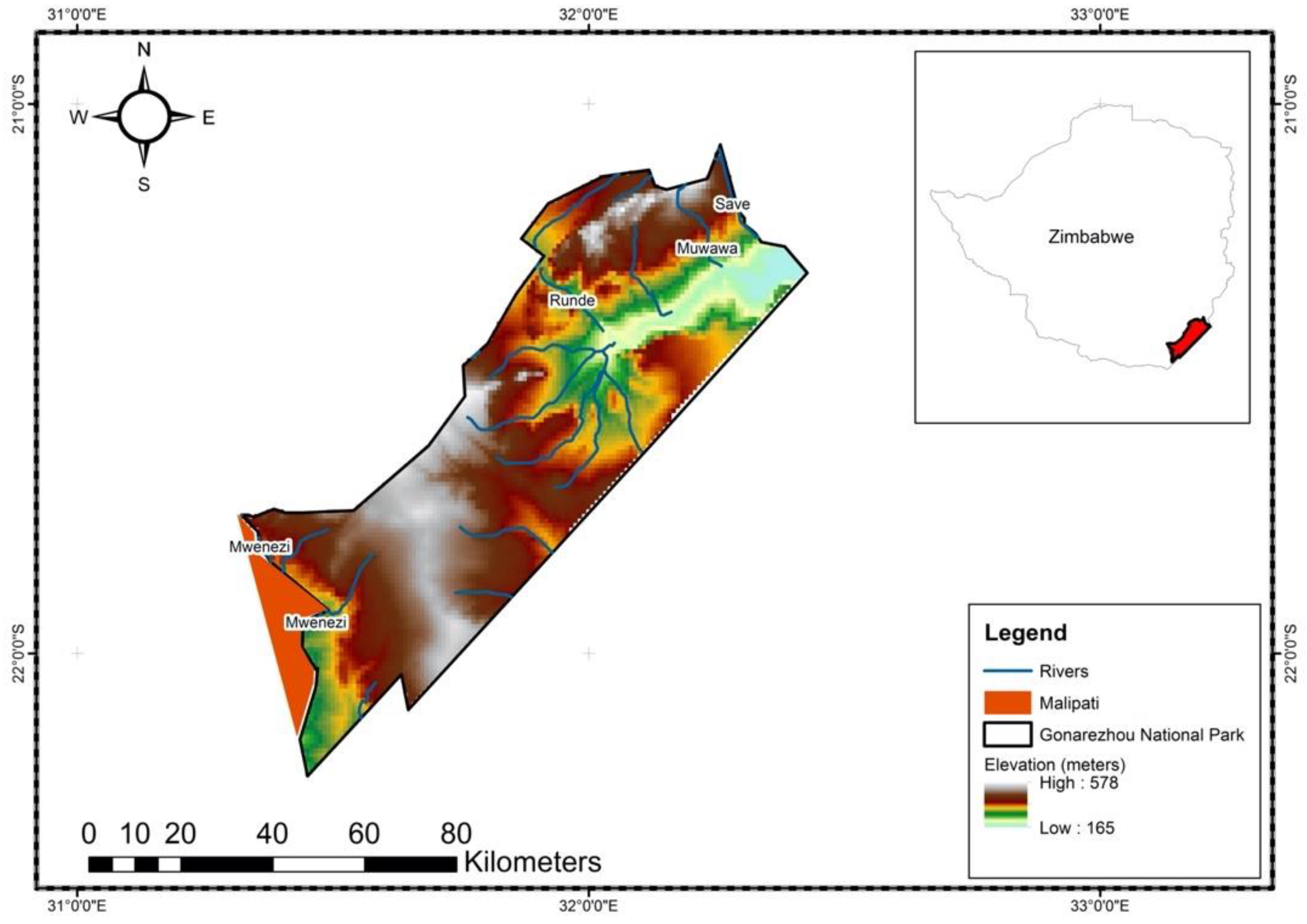
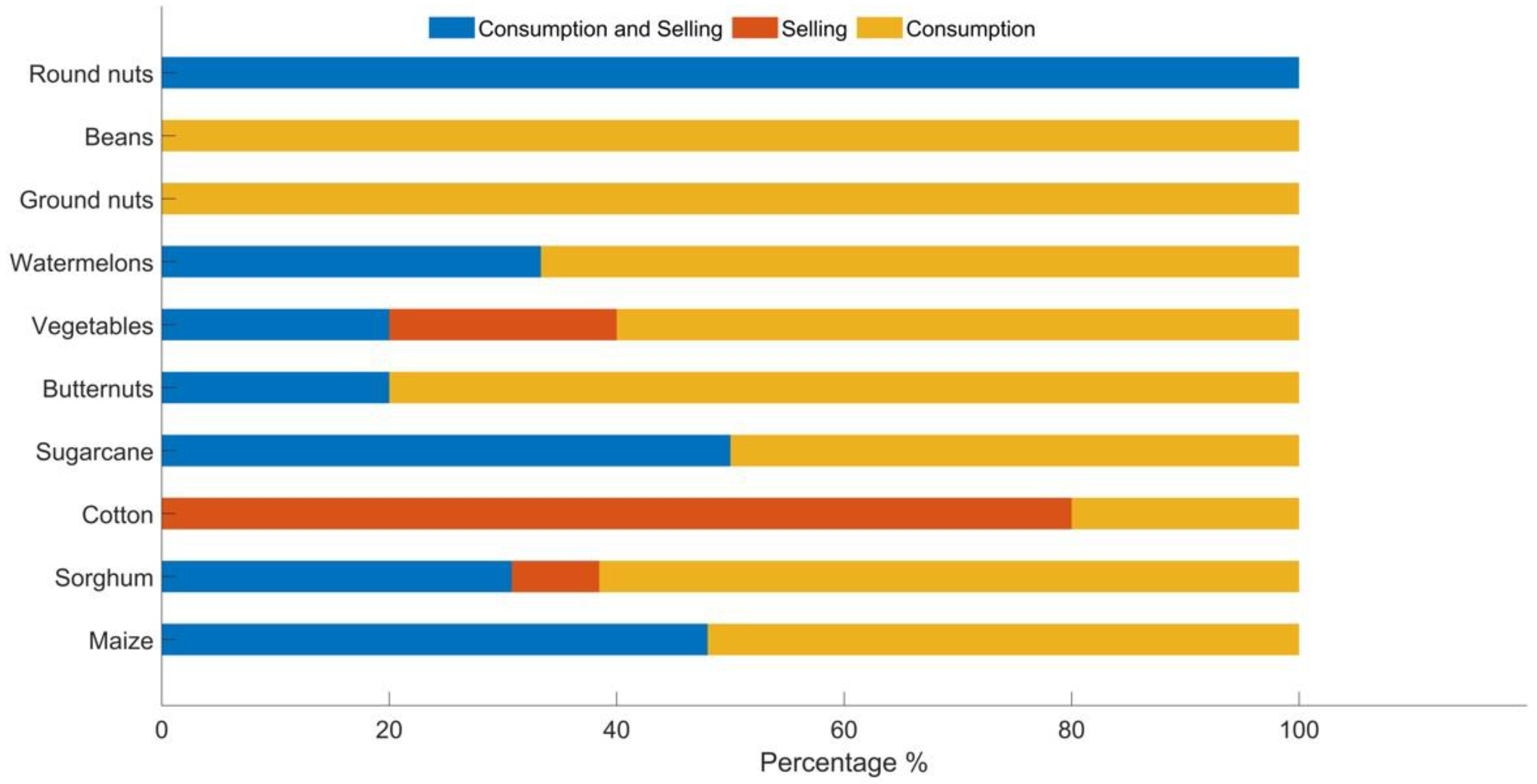
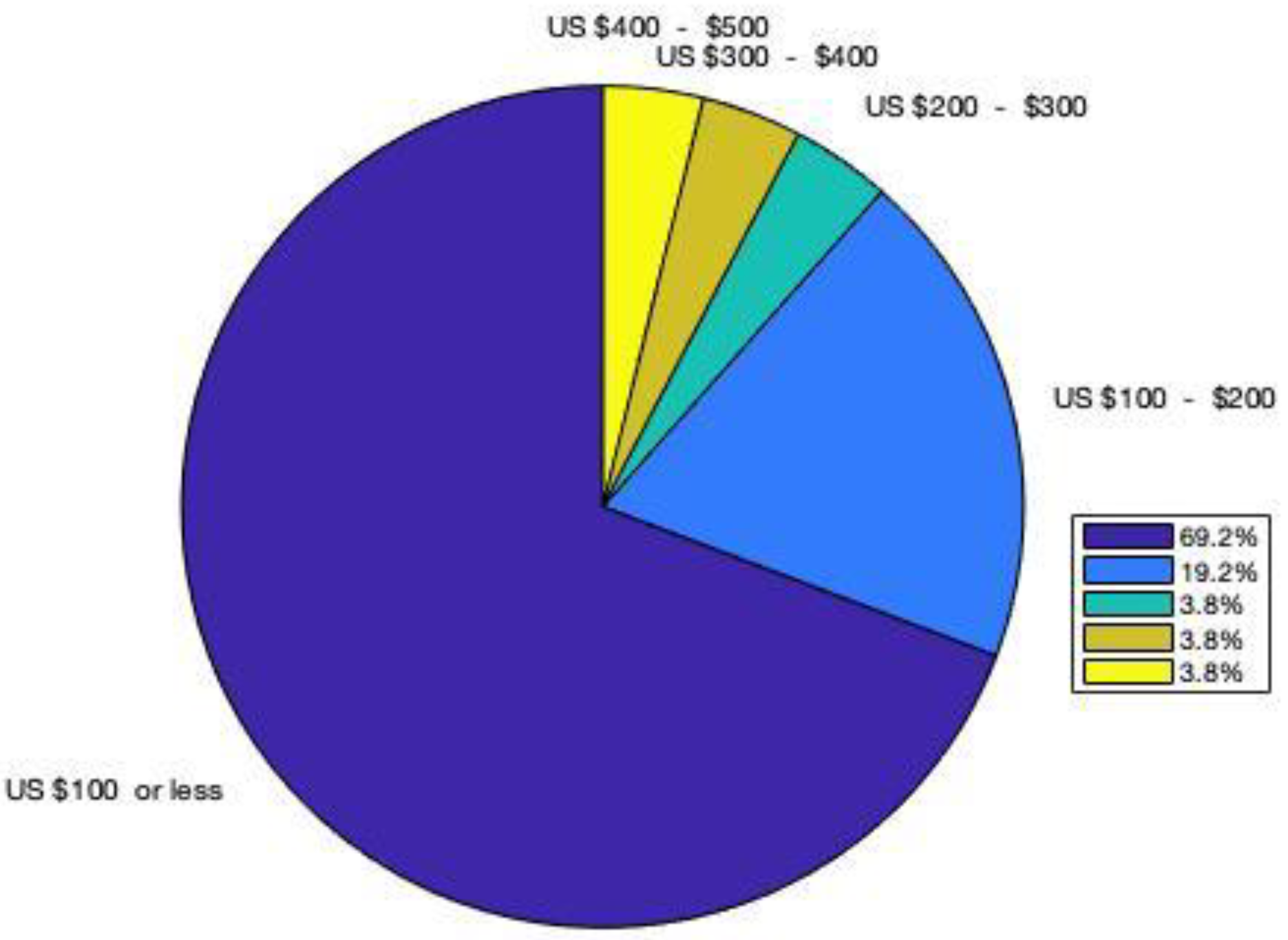
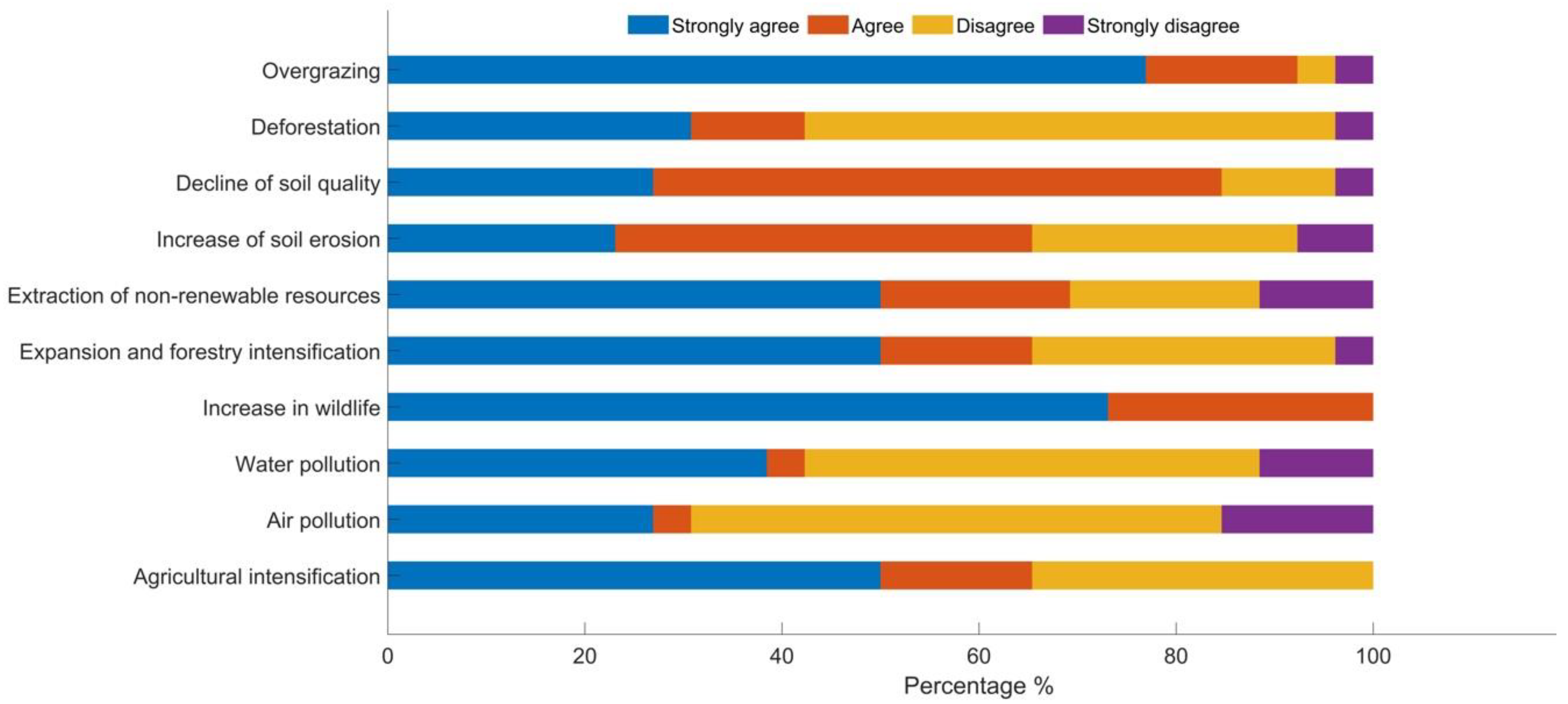
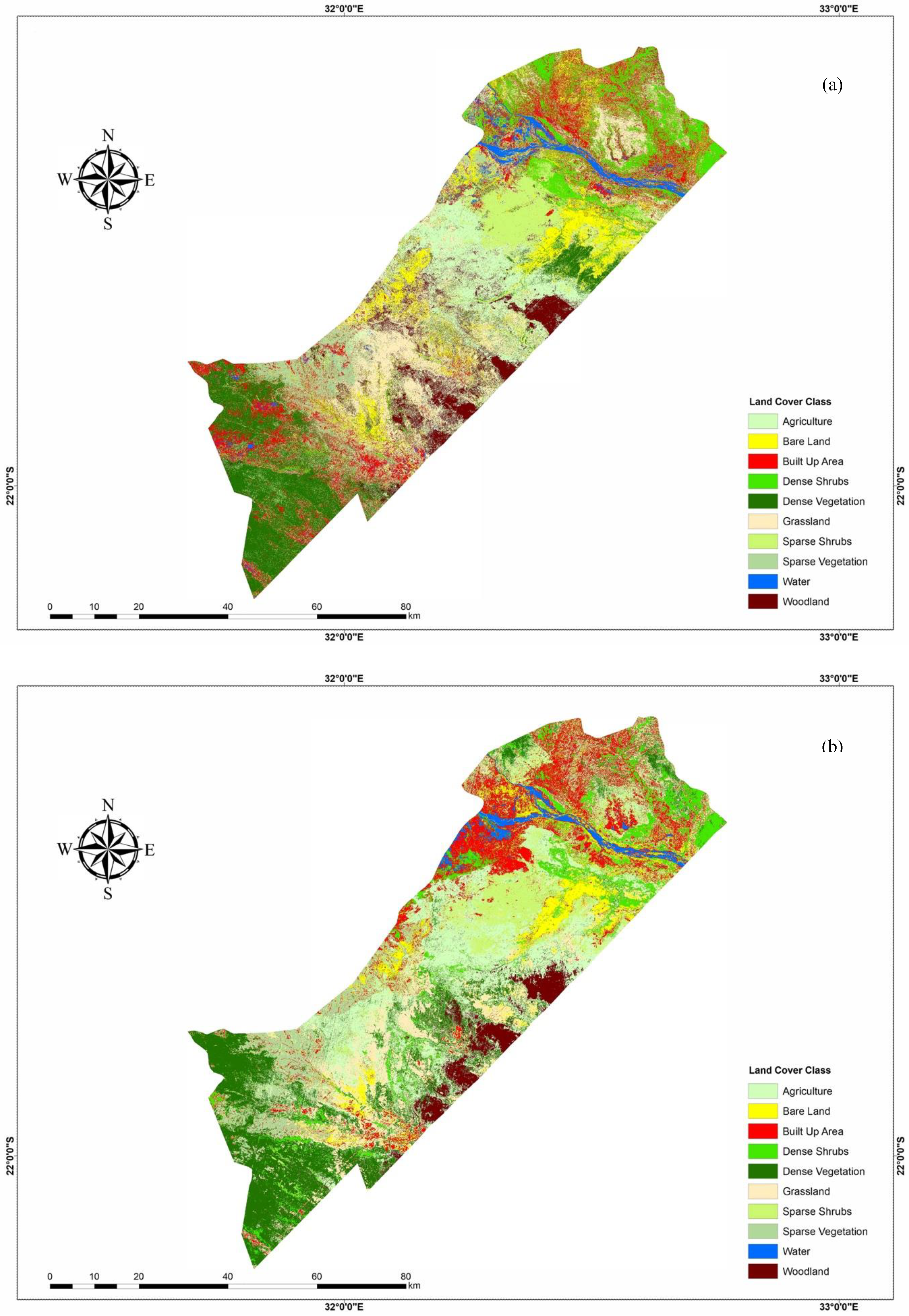
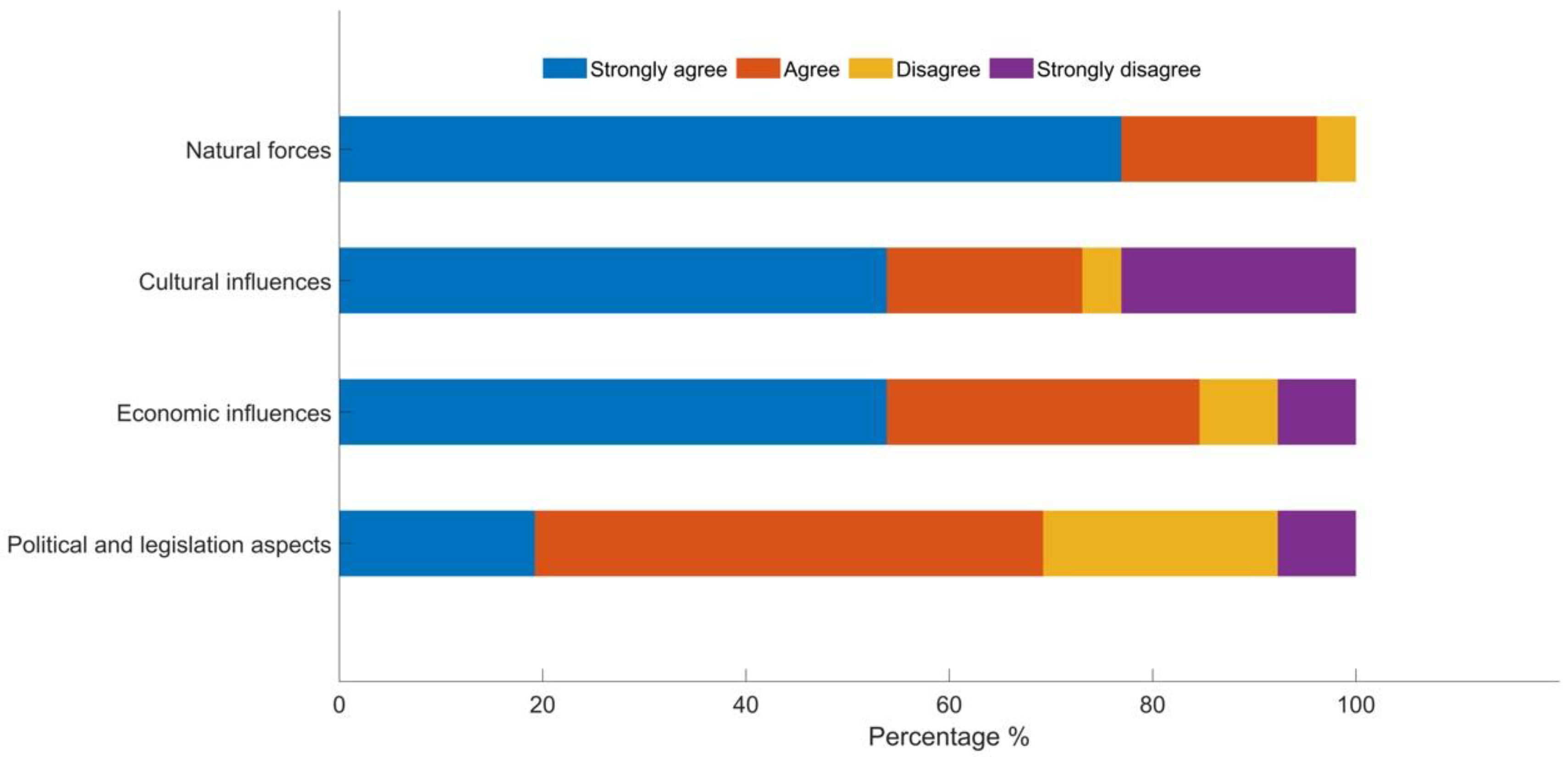
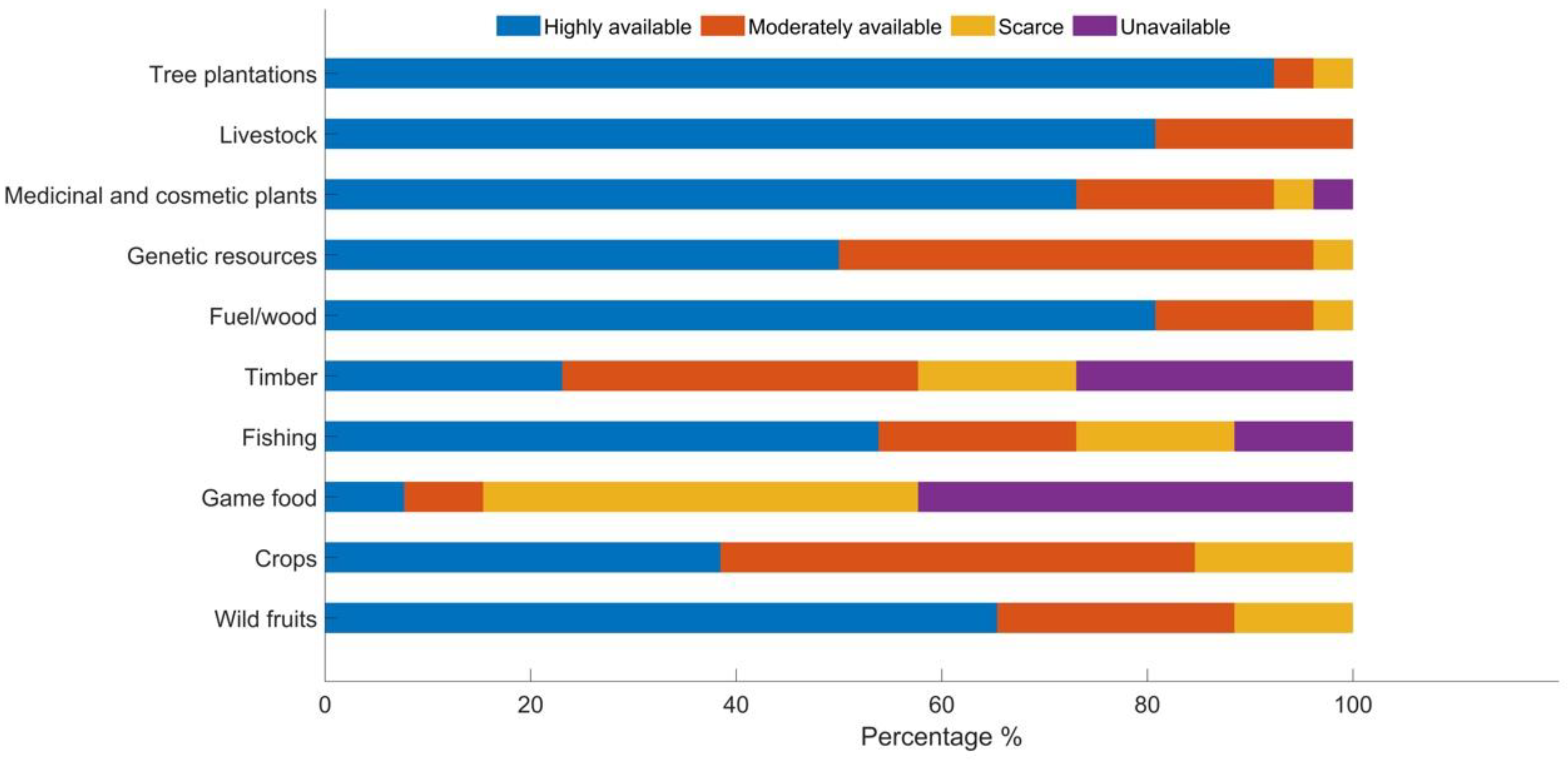
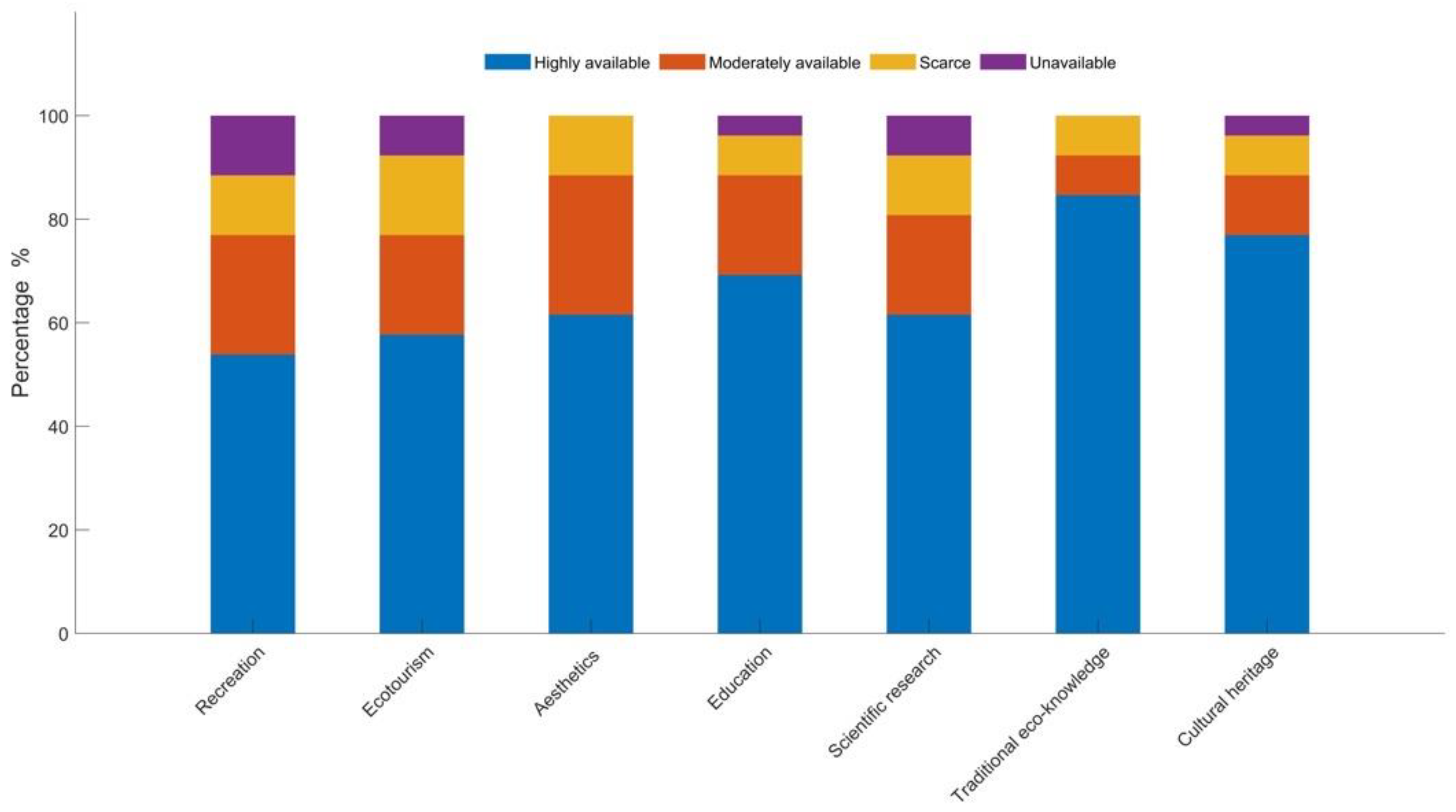
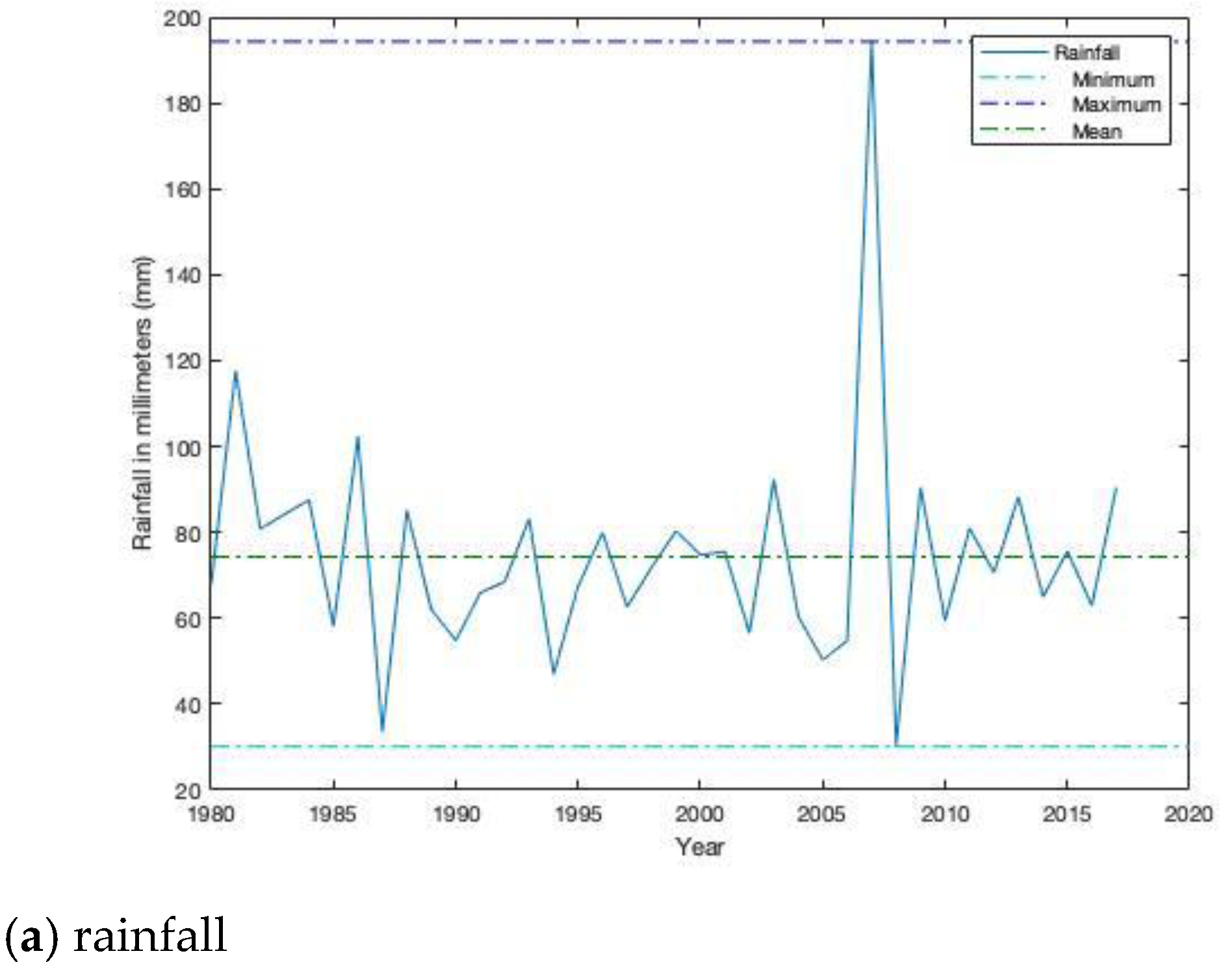
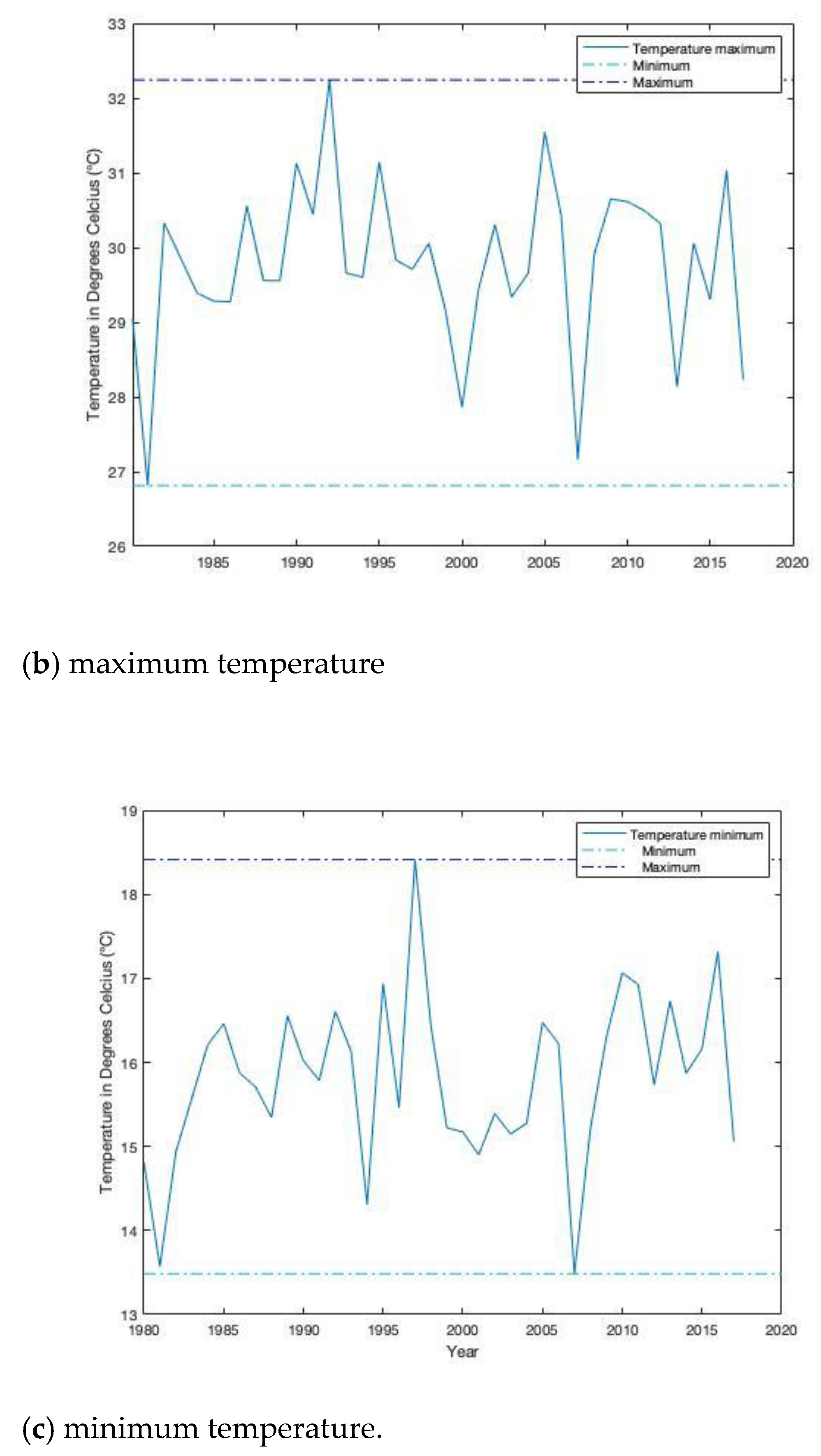
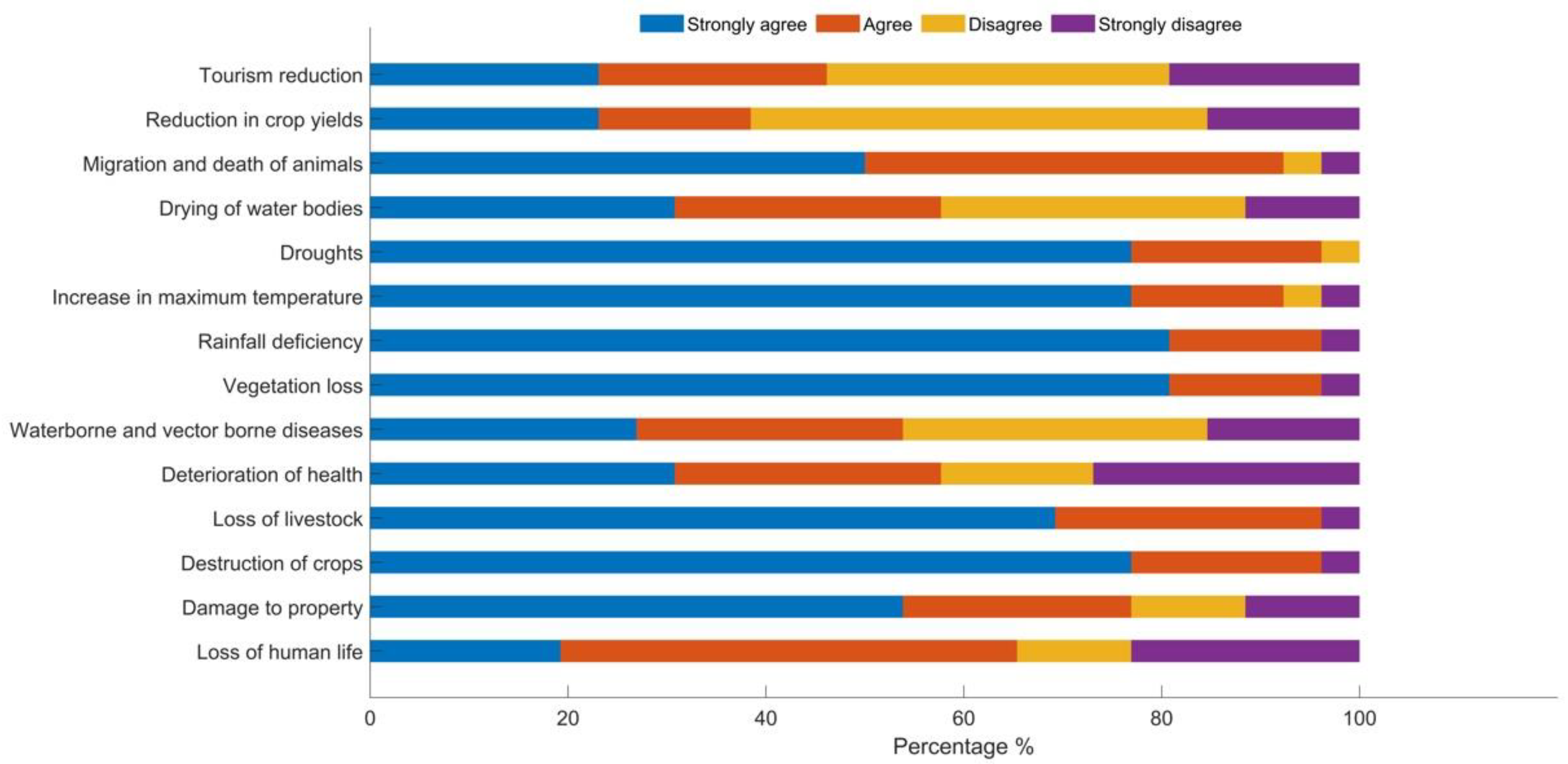
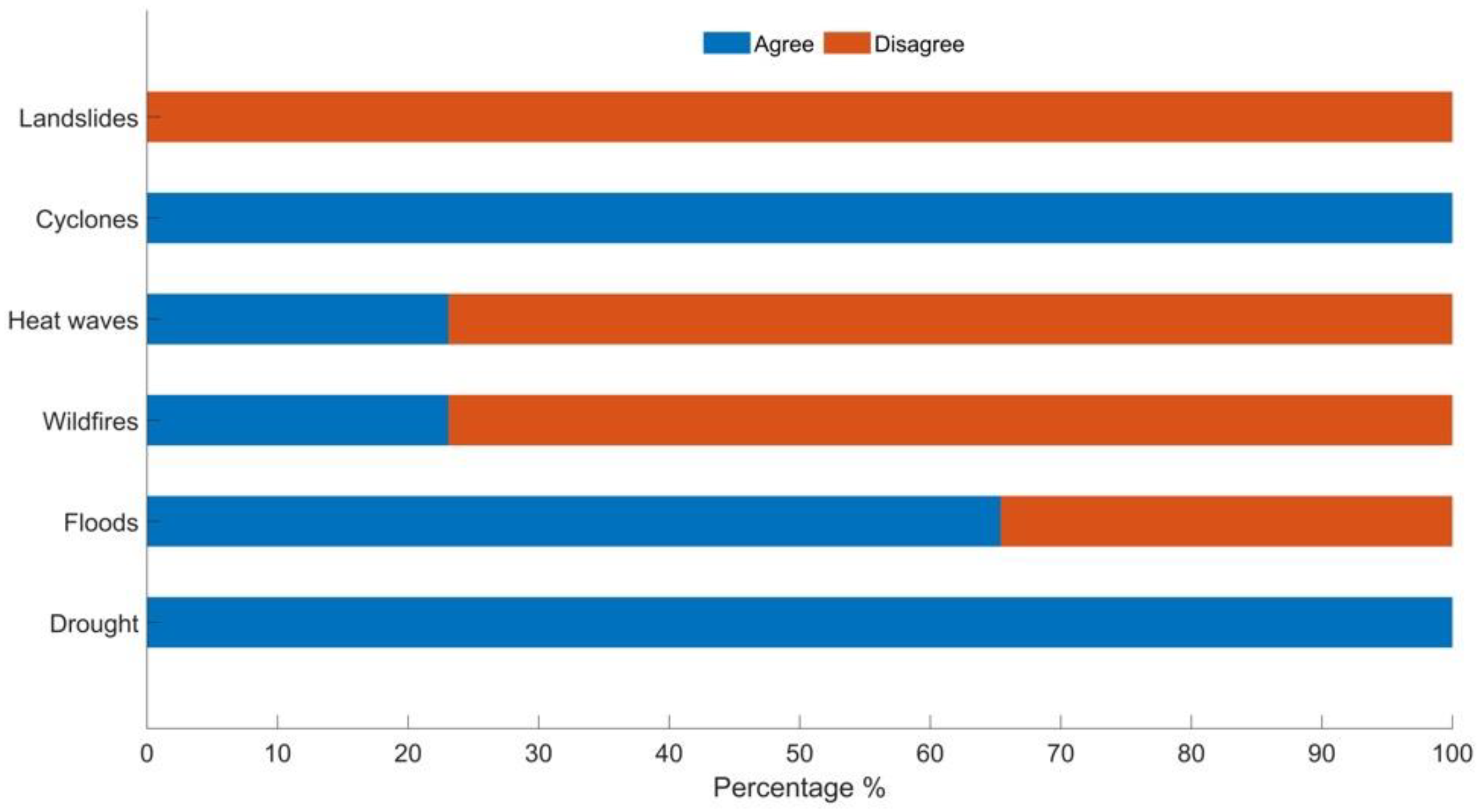
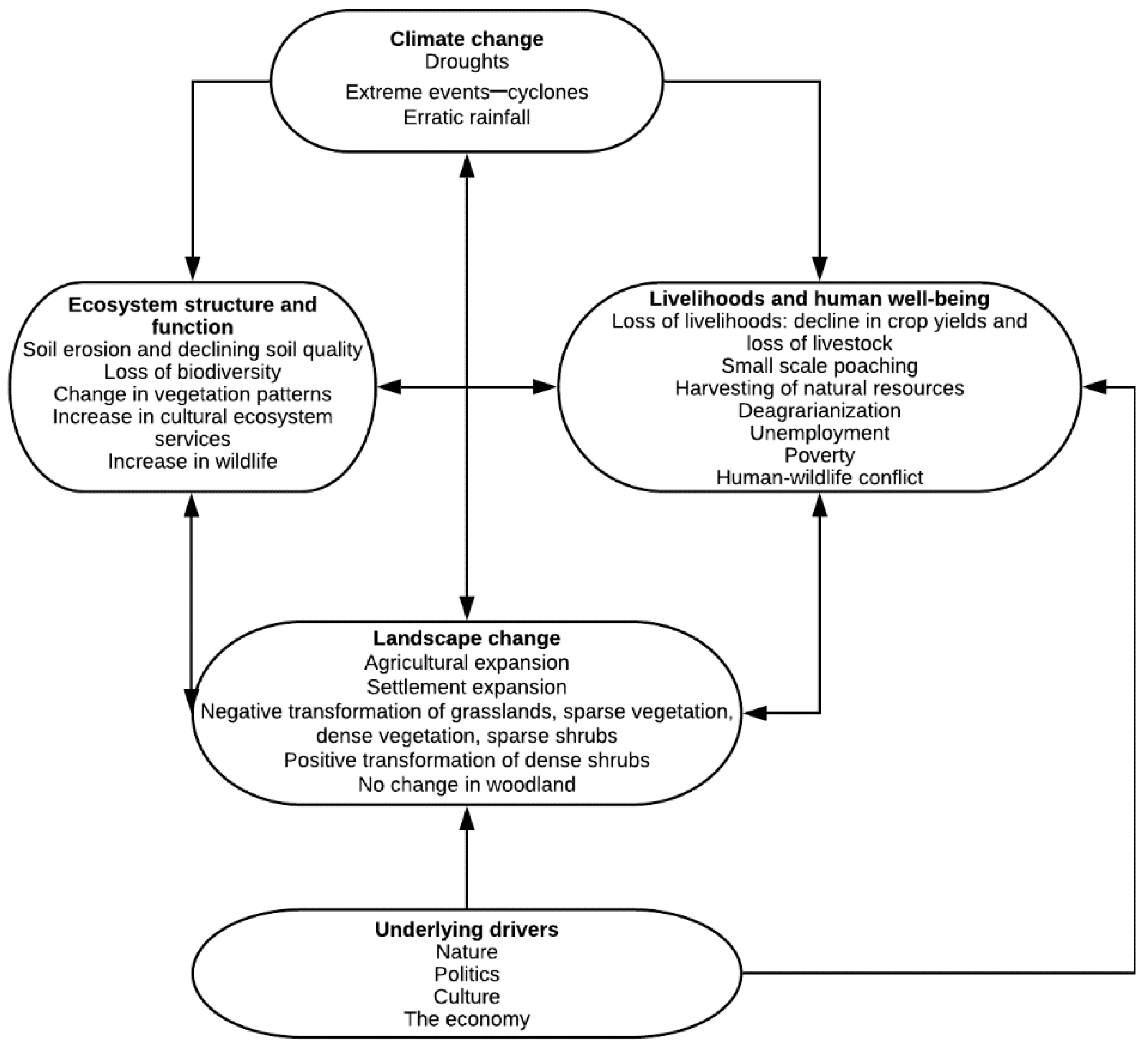
| Land Cover Class | Description |
|---|---|
| Grassland | All areas of grassland with less than 10% tree cover, grass-like, non-woody, rooted herbaceous plants. Typically associated with the grassland and Savanna biomes. |
| Dense shrubs | Dominated by low, woody, broad-leaved, or bushes, multi-stemmed plants near the ground, between 0.2 and 2 m in height. |
| Sparse shrubs | Low shrublands and heathlands, typically small-leaved, near the ground, between 0.2 and 2 m in height. |
| Dense vegetation | Composed of tall, woody, self-supporting, single, or multi-stemmed plants with no clearly defined structure. |
| Sparse vegetation | Scattered islands of not too tall or not too short vegetation (i.e., < 70% cover). |
| Woodland | Wooded areas with greater tree crown aerial density of 10% or more. Self-supporting single-stemmed plants >5 m in height. Mostly indigenous trees. |
| Agricultural area | Permanent or temporary cultivation of crops for food and fiber. |
| Bare land | Non-vegetated areas, or areas of very little vegetation cover (excluding agricultural fields with no crop cover, and opencast mines and quarries), where the substrate or soil exposure is clearly apparent. |
| Built up area | Settlements, housing, surface covered by artificial structures that are impervious. |
| Water | Areas of (generally permanent) open water. The category includes natural and man-made water bodies, which are either static or flowing. |
| Attained Education Level | Percentage |
|---|---|
| Primary | 42 |
| Secondary | 31 |
| Certificate | 4 |
| Diploma | 4 |
| Postgraduate | 4 |
| Never went to school | 15 |
| Land Cover Class | Area 2007 (ha 1) | Area 2017 (ha) | Change in (ha) | Area in % 2 2007 | Area in % 2017 | CA 3 2007–2017 |
|---|---|---|---|---|---|---|
| Agricultural Area | 114,147 | 190,653 | 76,506 | 11 | 18 | 7 |
| Bare Land | 152,364 | 170,345 | 17,981 | 15 | 16 | 2 |
| Built Up Area | 25,648 | 93,080 | 67,432 | 2 | 9 | 7 |
| Dense Shrubs | 163,787 | 216,403 | 52,616 | 16 | 21 | 5 |
| Dense Vegetation | 19,935 | 12,830 | −7105 | 2 | 1 | −1 |
| Grassland | 204,507 | 143,957 | −60,550 | 20 | 14 | −6 |
| Sparse Shrubs | 161,069 | 99,675 | −61,394 | 16 | 10 | −6 |
| Sparse Vegetation | 163,226 | 74,725 | −88,501 | 16 | 7 | −9 |
| Water | 19,133 | 23,786 | 4653 | 2 | 2 | 0 |
| Woodland | 11,120 | 9482 | −1638 | 1 | 1 | 0 |
| Land cover class | Agriculture | Bare Land | Built Up Area | Dense Shrubs | Dense Vegetation | Grassland | Sparse Shrubs | Sparse Vegetation | Water | Woodland | Total Change % 1 |
|---|---|---|---|---|---|---|---|---|---|---|---|
| Agriculture | 0 | 5 | 0 | 0 | 0 | 0 | 2 | 0 | 0 | 0 | 7 |
| Bare Land | 0 | 0 | 0.7 | 0 | 0 | 0.3 | 0.6 | 0.4 | 0 | 0 | 2 |
| Built Up Area | 0 | 4 | 0 | 0 | 0 | 3 | 0 | 0 | 0 | 0 | 7 |
| Dense Shrub | 1.7 | 0 | 0 | 0 | 0.2 | 0 | 0,6 | 2.5 | 0 | 0 | 5 |
| Dense Vegetation | 0 | 0 | −0.5 | −0.3 | 0 | 0 | 0 | 0 | 0 | −0.2 | −1 |
| Grassland | −0.6 | -0.3 | 0 | 0 | 0 | 0 | −3 | −2 | 0 | −0.1 | −6 |
| Sparse Shrubs | −1.3 | −1.8 | -2 | 0 | 0 | −0.9 | 0 | 0 | 0 | 0 | −6 |
| Sparse Vegetation | 0 | −1.9 | −2.3 | 0 | 0 | 0 | −4 | 0 | 0 | −0.8 | −9 |
| Water | 0 | 0.05 | 0 | 0 | 0 | 0 | 0 | 0 | 0 | 0 | 0 |
| Woodland | 0 | 0 | 0 | 0 | 0.01 | 0 | 0 | 0 | 0 | 0 | 0 |
© 2020 by the authors. Licensee MDPI, Basel, Switzerland. This article is an open access article distributed under the terms and conditions of the Creative Commons Attribution (CC BY) license (http://creativecommons.org/licenses/by/4.0/).
Share and Cite
Musakwa, W.; Mpofu, E.; Nyathi, N.A. Local Community Perceptions on Landscape Change, Ecosystem Services, Climate Change, and Livelihoods in Gonarezhou National Park, Zimbabwe. Sustainability 2020, 12, 4610. https://doi.org/10.3390/su12114610
Musakwa W, Mpofu E, Nyathi NA. Local Community Perceptions on Landscape Change, Ecosystem Services, Climate Change, and Livelihoods in Gonarezhou National Park, Zimbabwe. Sustainability. 2020; 12(11):4610. https://doi.org/10.3390/su12114610
Chicago/Turabian StyleMusakwa, Walter, Ephraim Mpofu, and Nesisa Analisa Nyathi. 2020. "Local Community Perceptions on Landscape Change, Ecosystem Services, Climate Change, and Livelihoods in Gonarezhou National Park, Zimbabwe" Sustainability 12, no. 11: 4610. https://doi.org/10.3390/su12114610
APA StyleMusakwa, W., Mpofu, E., & Nyathi, N. A. (2020). Local Community Perceptions on Landscape Change, Ecosystem Services, Climate Change, and Livelihoods in Gonarezhou National Park, Zimbabwe. Sustainability, 12(11), 4610. https://doi.org/10.3390/su12114610






